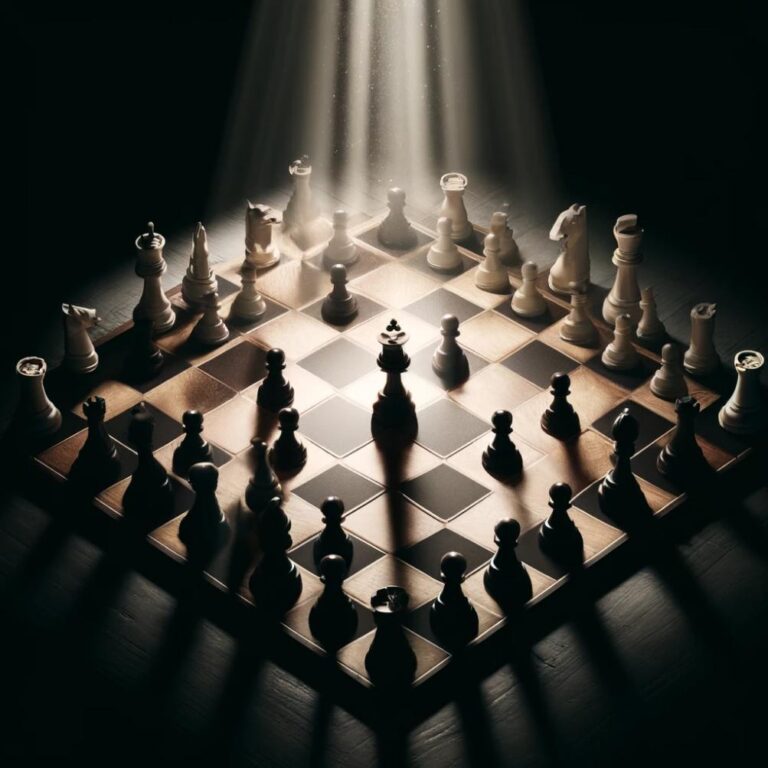Section 1: What are Visualization Techniques in Chess?
Chess is a game that requires a lot of mental strength and strategic thinking. In order to be successful in chess, players must have the ability to think ahead and visualize potential moves and their consequences. This is where visualization techniques come into play.
One of the most important aspects of visualization in chess is the ability to calculate moves ahead. This means predicting the opponent´s counter moves and coming up with the best response to them. This requires a lot of concentration and focus, as well as a deep understanding of the game and its various strategies.
Section 2: How do Visualization Techniques Improve Your Game?
Visualization techniques are an essential part of improving one´s game in chess. Here are some ways in which these techniques can help elevate your game to the next level:
By visualizing different scenarios and outcomes on the chessboard, players are forced to think strategically and consider all possible moves. This improves their ability to come up with effective plans and anticipate their opponent´s moves. Successful chess players are known for their strategic thinking skills, and visualization plays a crucial role in honing this skill.
When players are able to visualize potential moves and their consequences, they are better equipped to make quick and accurate calculations during the game. This helps them make better decisions and avoid making mistakes that could cost them the game. The more a player practices visualization, the more accurate their calculations and decisions will become.
Visualization in chess requires a lot of concentration and focus. Players must be able to visualize the board and remember different positions and moves. This helps enhance memory and concentration, which are important skills not only in chess but in other aspects of life as well.
One major advantage of visualization techniques in chess is that it reduces the need for physical movement. When players can visualize the board and potential moves in their minds, they don´t have to constantly move the pieces on the actual board. This saves time and energy, allowing players to focus more on the game.
Visualization also comes in handy when analyzing games and learning from mistakes. By replaying the game in their mind, players can identify where they went wrong and what decisions could have been made differently. This helps in learning from mistakes and improving one´s game for future matches.
Section 3: Tips for Practicing Visualization Techniques
Here are some tips for effectively practicing visualization techniques in chess:
One of the best ways to practice visualization is by studying games of famous chess players. By analyzing their moves and trying to visualize their thought process, players can improve their own ability to visualize and come up with strategies.
Solving chess puzzles is an effective way to improve both visualization and decision-making skills in chess. These puzzles require players to visualize and calculate different moves to reach a specific outcome. Regular practice with chess puzzles can greatly enhance one´s visualization abilities.
A challenging but effective way to practice visualization techniques is through playing blindfolded chess. This involves playing the game without physically seeing the board, relying solely on one´s visualization skills. This can greatly improve a player´s ability to visualize and calculate moves.
In addition to visualizing current positions on the board, players should also practice visualizing potential future positions and different scenarios. This will help in developing a broader understanding of the game and improve strategic thinking skills.
Visualization can be mentally taxing, so it´s important to take breaks when needed. Players should step away from the board and clear their minds before returning to the game. This will help maintain concentration and avoid burnout.
Section 4: Common Challenges in Visualizing in Chess
While visualization techniques can greatly improve one´s game in chess, there are some common challenges that players may face. Here are a few of them:
External distractions, such as noise or movements around the playing area, can make it difficult to concentrate and visualize effectively. It´s important for players to find a quiet, distraction-free environment for playing or practicing chess.
In a long game of chess, players can get mentally fatigued and lose focus, making it harder to visualize and make accurate calculations. It´s important to take breaks and stay mentally sharp throughout the game.
3. Losing Track of Pieces or Moves
With so many pieces and potential moves on the board, it´s easy to lose track of them in one´s mind. This can lead to inaccurate visualizations and decisions. To avoid this, players should work on improving their memory and concentration skills.
Section 5: Conclusion
Visualization techniques are a crucial aspect of improving one´s game in chess. They help players think strategically, make accurate calculations, and improve their memory and concentration. By practicing and honing these techniques, players can take their game to the next level and become successful chess players. So next time you´re sitting at the chessboard, remember to visualize and think ahead before making your move.

